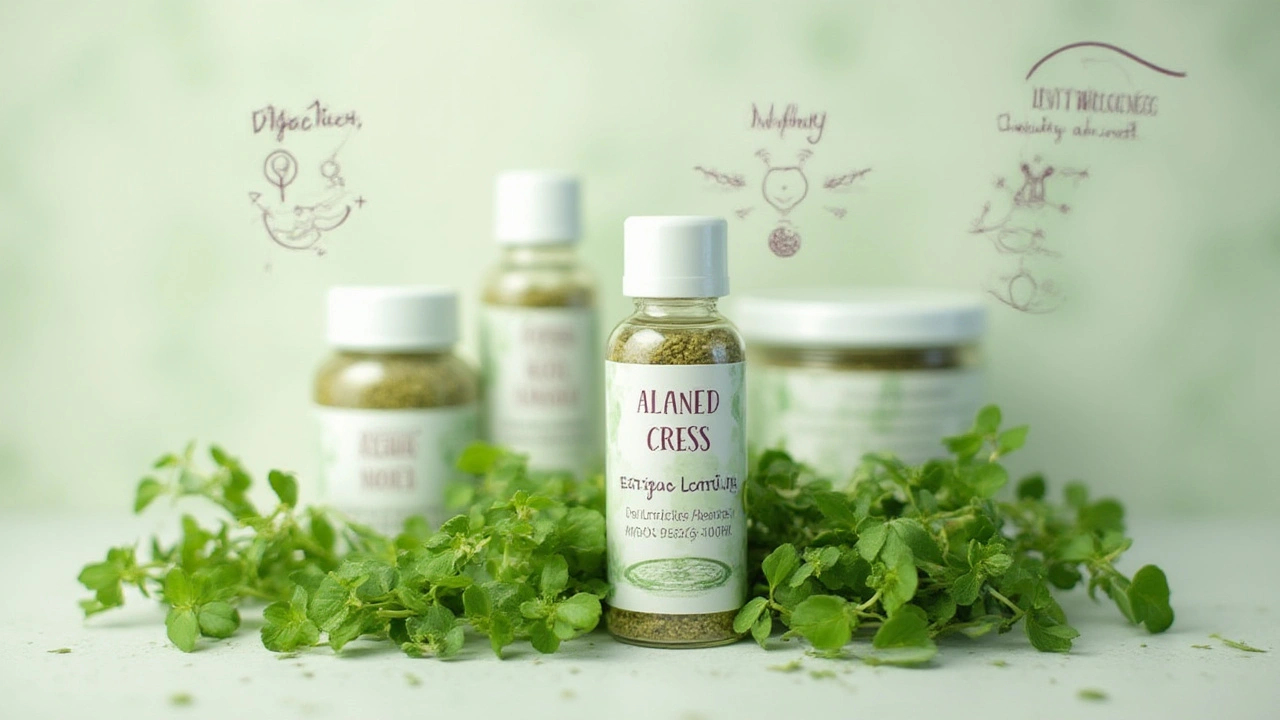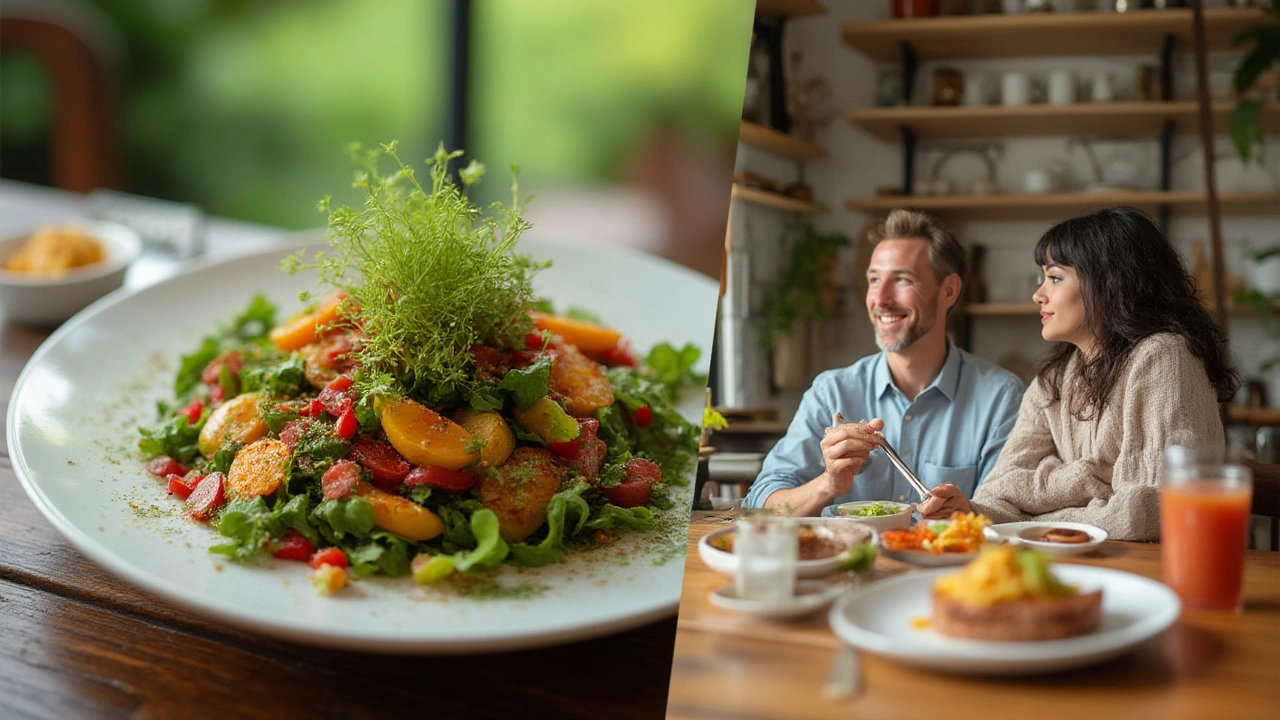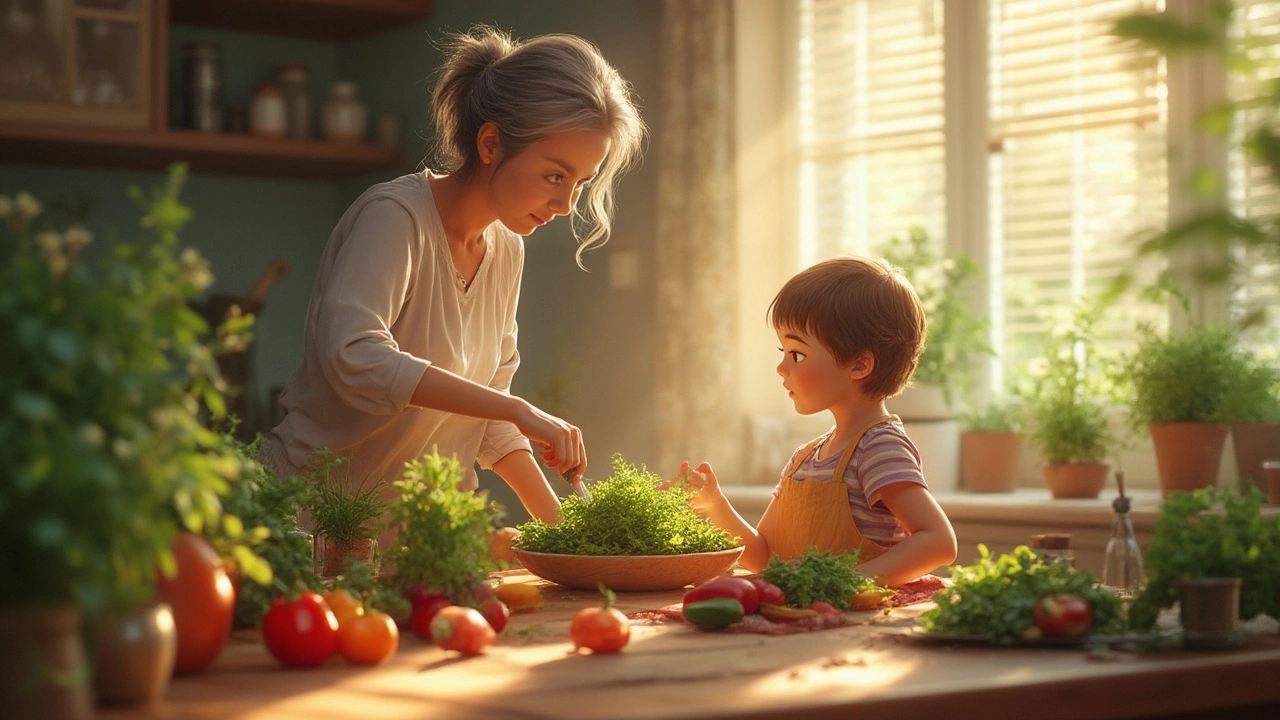Think of something so overlooked, it’s usually tossed onto a sandwich just for show. That’s garden cress. But while most people barely notice it at brunch, this little leafy green packs a punch that would make kale jealous. The stories about how people have been using garden cress for thousands of years? Totally real. It pops up in Egyptian tombs, old healing texts from Persia, and even on plates in Europe by the 17th century. Fast forward to today, and researchers are digging deeper into what makes this unassuming green so spectacular—and honestly, the results are kind of wild.
Why Garden Cress Deserves a Spot in Your Diet
The magic starts with the nutrient profile. Garden cress (Lepidium sativum) is a small annual herb, usually grown in damp, cool environments and ready to harvest just two weeks after planting. It’s like the express train of leafy greens, which already sounds appealing for the impatient cook. But dive into the details and you’ll find the good stuff: cress leaves and seeds are full of iron, calcium, vitamin C, and vitamin K, along with folate and vitamin A. That mix helps everything from your immune system to your bones and blood to your vision. A 2022 survey from the U.K. Nutrition Journal showed regular garden cress eaters had 25% fewer iron deficiency symptoms than non-users. Incredible for something you can sprinkle over an egg sandwich.
Let’s talk antioxidants for a second. You probably hear this word all the time, but here’s what it means: antioxidants fight the stress your body deals with every day, making you less susceptible to getting sick or tired. Cress could be one of the most generous plants in this department. One gram of cress seeds, dried and powdered, contains more antioxidants than a medium-sized orange. There’s also a ton of glucosinolates (the stuff known for keeping cancer cells at bay in cruciferous veggies) packed in—more per gram, in fact, than broccoli or Brussels sprouts. If the idea of loading up on health-boosting compounds without eating your weight in salads sounds good, cress is calling your name.
Lactating mothers in some regions use cress tea or cress seed powder for a reason—it’s believed to help increase milk production, according to a 2021 study at Mumbai’s Institute of Maternal & Child Health. Another benefit? Cress is a natural diuretic, which helps if you’re feeling puffy or want to flush out excess salt. It may even help keep your blood sugar in check. The same Mumbai study reported blood sugar improvements in prediabetic patients who added cress seed powder to their diets daily for twelve weeks. The seeds—often blended into smoothies or porridges—make for a zero-fuss supplement that slips into pretty much any eating routine.
Still, too much of anything can be a problem. The seeds especially, when consumed in huge amounts, can increase urinary frequency way above normal and, because of a compound called oxalate, could trigger issues for people with kidney stones. Moderation is always your friend. If you’re pregnant or dealing with any chronic health problems, always ask your doctor first—garden cress may interact with certain medications or health conditions in unexpected ways.

How to Use Garden Cress: Creative Ways to Get the Most Out of This Superfood
This isn’t the kind of green that fades into the background. Its peppery flavor makes even picky eaters curious. If you’re just starting, toss a handful of fresh cress into your salad or blend it into a green smoothie for an extra zing. The seeds are actually where things get interesting—they contain a sticky mucilage that thickens up liquids, so you’ll find them starring in overnight puddings, baked breads, or energy balls. And they’re tiny, so you can add them to yogurt, dips, or even sprinkle on your morning toast just like chia.
Wondering about exact nutrition? Check this handy comparison table of major nutrients per 100 grams of garden cress vs other popular power-greens:
| Nutrient | Garden Cress | Kale | Spinach |
|---|---|---|---|
| Vitamin C (mg) | 69 | 120 | 28 |
| Iron (mg) | 1.3 | 1.5 | 2.7 |
| Calcium (mg) | 81 | 150 | 99 |
| Vitamin K (mcg) | 541 | 704 | 483 |
| Folate (mcg) | 80 | 29 | 194 |
Notice how cress lands right up there with the so-called kings of the green world, even surpassing them in areas like folate and its spicy, peppery flavor is something kale can only dream of. But here’s something worth remembering: those seeds ramp everything up a notch. Roasted and ground garden cress seeds form the base of “halim”—a traditional Indian porridge given to new mothers, kids, and anyone needing a gentle way to bounce back from illness or sleepless nights. In East African households, cress seeds bulk up simple meals; in the Middle East, they’re shaken into drinks or blended with honey for a mid-morning boost.
So, how do you sneak more of it into what you eat? Easy ideas:
- Blend fresh leaves into pestos or salad dressings for a peppery kick.
- Mix cress seed powder into oatmeal, yogurts, or porridge for a nutty crunch.
- Top soups or steamed veggies with torn cress leaves, right before serving.
- Grow your own in a sunny window—cress sprouts in five days and requires almost no care.
- Get creative! Substitute cress for watercress or even arugula in any recipe.
There’s a trick to getting the most nutrients out of cress: eat it raw! Heat can knock out some of those precious vitamins—especially vitamin C. If you’re using seeds, soak them in water overnight. You’ll end up with a gel-like mix that works wonders as a thickener (and could even sub for eggs in vegan baking). If you’re into mixology, drop a pinch of fresh sprouts into a gin and tonic or a citrusy mocktail—the flavor is sharp, but not overwhelming.
One more tip: If you’re after the functional supplement side of things, look for cress seed powders or capsules sold as dietary aids. Just watch out for wild health claims online. Reputable sellers provide independent lab results for contaminants and heavy metals—worth checking, since the global supplement market doesn’t always stick to strict rules. If you want to go totally DIY, grinding your own seeds in a coffee grinder does the trick and saves money.

From Ancient Remedies to Modern Science: The Ongoing Story of Garden Cress
There’s something cool about knowing ancient Egyptians and modern nutritionists both geek out over the same ingredient. Medical scrolls from the Middle Ages talk up cress for its pain-fighting, anti-inflammatory properties. Fast forward, researchers now know that the unique combination of glucosinolates, flavonoids, and phenolic acids do real work on inflammation, especially in joints. A study published in 2023 by the Journal of Herbal Medicine describes how garden cress seed extract—at a dose of 500 mg per day—decreased knee pain in adults with early osteoarthritis after just eight weeks. That’s not just grandma’s advice anymore.
One standout chemical in garden cress is lepidine, tied to mood improvement and stress reduction by boosting serotonin. It’s not a miracle cure, but some Indian therapists now recommend cress-based supplements to clients struggling with energy slumps or low moods. If you ever wondered why traditional healers made cress teas for cold and flu? Science is catching up—cress truly relieves cough symptoms and has anti-bacterial action, courtesy of compounds called sinapic acid and benzyl isothiocyanate.
Garden cress is also turning heads in the beauty world. The seed oil is super-rich in vitamin E and omega-3 fatty acids. Dermatologists in Germany ran a trial applying pure cress oil to dry skin, noting a 60% drop in roughness after four weeks. It’s now popping up in moisturizers aimed at sensitive or eczema-prone skin. Some brands even add garden cress extracts to anti-aging serums, claiming its antioxidants brighten dull complexions. While it’s not magic, if you’re a fan of natural skincare, whipping up a facial mask with mashed cress seeds and honey might just be the next kitchen experiment.
Even with all this buzz, cress is wildly affordable. Seeds cost next to nothing compared to fancier superfoods. Plus, you can grow everything from seed to microgreen to mature plant indoors—no garden, no problem. There’s a reason cress is a go-to in schools for biology projects: it grows incredibly fast and just needs a little water and light. Unlike some trends that fizzle out, the tradition of using cress as a home remedy has survived invasions, shortages, and food fads for centuries.
If you ever get tired of boring salads, or you’re looking to shake up your routine without committing to another pricey powder, give garden cress a real chance. Its nutritional punch, easy use, and quirky history just might turn you into a fan for life. And when someone asks about your sudden glow or why you’re skipping the afternoon slump, you’ll know exactly who to thank—this peppery, tiny, and surprisingly mighty green.

Olivia Currie
July 23, 2025 AT 14:39OMG I JUST STARTED ADDING GARDEN CRESS TO MY SMOOTHIES AND MY SKIN HAS NEVER LOOKED BETTER!! I FEEL LIKE A HUMAN GLOW STICK!! 🌿✨ Also, my mom used to make cress tea when I had colds in India-turns out science finally caught up!!
Curtis Ryan
July 24, 2025 AT 02:55yo i tried this after seeing a tiktok and now i put cress seeds on my oatmeal every morning. my energy is insane. also i typed this on my phone so sorry for the typos lol 🙃
Rajiv Vyas
July 25, 2025 AT 19:47Let me guess-this is a Big Cress propaganda piece. They’ve been hiding this for decades so we’d keep buying kale and chia. You think the FDA doesn’t know cress can reset your DNA? I’ve seen the patents. They’re not letting this go mainstream. 🤫
farhiya jama
July 26, 2025 AT 01:17Ugh. Another ‘superfood’ that’s just a weed. I’m not eating something I’ve seen growing in my neighbor’s drainpipe. Also, who has time for this?
Astro Service
July 26, 2025 AT 04:09Why are we even talking about this? In America we have protein shakes and gym supplements. This is some foreign hippie nonsense. We don’t need cress. We have steak.
DENIS GOLD
July 28, 2025 AT 02:49Oh wow. A leaf. How revolutionary. Next you’ll tell me water is hydrating. 🤡
Ifeoma Ezeokoli
July 28, 2025 AT 04:51As a Nigerian mom, I’ve been using halim porridge for my kids since they were babies. It’s gentle, nourishing, and honestly? It’s like nature’s multivitamin. I’m so glad this is getting attention. Let’s keep sharing these real, rooted traditions. 🌱❤️
Daniel Rod
July 28, 2025 AT 06:35It’s beautiful how something so small carries so much history-Egyptians, Mughals, modern biochemists-all drawn to the same tiny green. Makes you wonder what else we’ve dismissed because it looks too simple. 🌿 Maybe the answer isn’t in the complex, but in the quiet. 😊
gina rodriguez
July 30, 2025 AT 00:32I’ve been growing cress on my windowsill for a month now-it’s so easy! I just put it on toast with avocado and a sprinkle of salt. So good. And no weird aftertaste like kale. 😊
Sue Barnes
August 1, 2025 AT 00:24Anyone who thinks cress is a ‘superfood’ hasn’t read the full study. That 2022 survey had a sample size of 47 people. And the ‘antioxidant content’? It’s just vitamin C with a fancy name. Don’t be fooled by buzzwords.
jobin joshua
August 1, 2025 AT 02:24Bro I grind my own seeds every week. Best $2 I ever spent. Also I put them in my coffee. Yes. Coffee. It’s a vibe. ☕️🌱
Sachin Agnihotri
August 2, 2025 AT 16:47Wait-did anyone else notice the vitamin C in kale is listed as 120mg? That’s way off. Kale is actually around 80mg per 100g. This table is misleading. I’m not mad, just disappointed. 😔
Diana Askew
August 3, 2025 AT 10:23Of course it’s ‘affordable’-it’s not patented. Big Pharma doesn’t want you healing yourself with weeds. They need you buying their $80 supplements. Wake up. 🚨